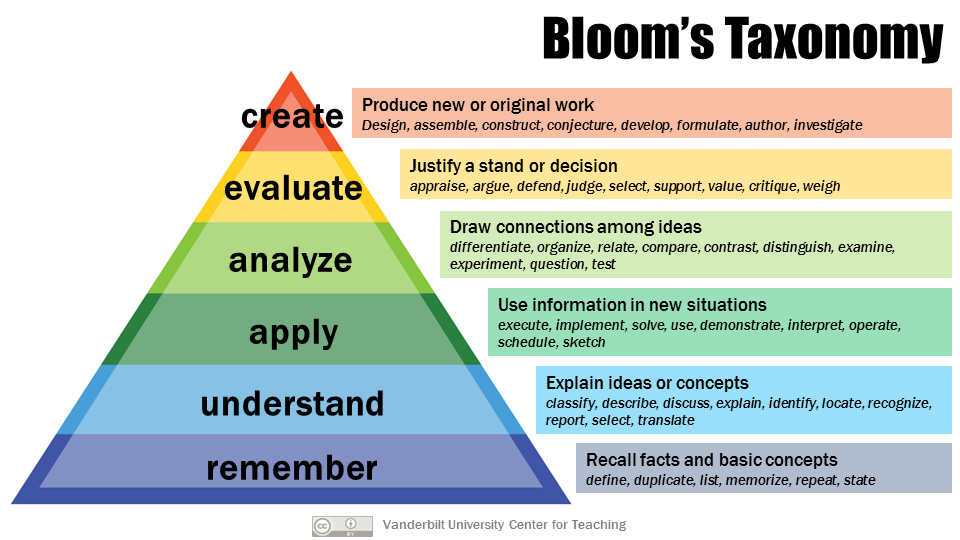ACRL Framework for Information Literacy for Higher Education
“The Framework offered here is called a framework intentionally because it is based on a cluster of interconnected core concepts, with flexible options for implementation, rather than on a set of standards, learning outcomes, or any prescriptive enumeration of skills.”The six concepts that make up the framework are:
Understanding by Design
An excellent book by Grant Wiggins and Jay McTighe, Understanding by Design is a way of thinking about crafting lesson plans through “Backward Design.” The idea of Backward Design is at the core of our lesson planning template.
Blooms Taxonomy
Blooms Taxonomy is a taxonomy of educational objectives that divides levels of expertise into six “skills and abilities.” The taxonomy offers descriptions of each category, as well as examples of measurable learning outcomes. This can be especially useful as you are developing your learning objectives.
Project Information Literacy
Project Information Literacy (PIL) is a large-scale national study about college students and how they find, evaluate, and select information for use in their courses and for solving information problems in everyday life. They have many publications that might be useful to you. We suggest “Learning the Ropes: How Freshmen Conduct Course Research Once They Enter College,” Alison J. Head, Project Information Literacy, Passage Studies Research Report, December 4, 2013. (Two different versions available: Text with appendix, 48 pages, PDF, 5.78 MB or text without the appendix, 29 pages, PDF, 5.47 KB)
Library Instruction Books
There’s a selection of books in Dayna’s office with further instruction ideas – browse the list here!
